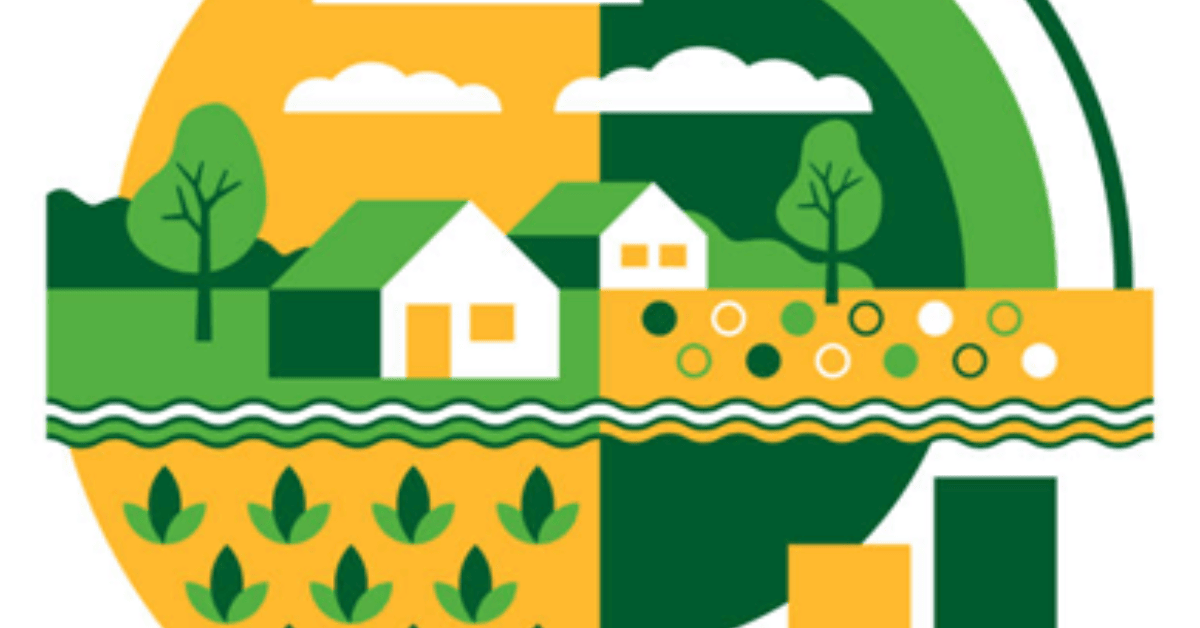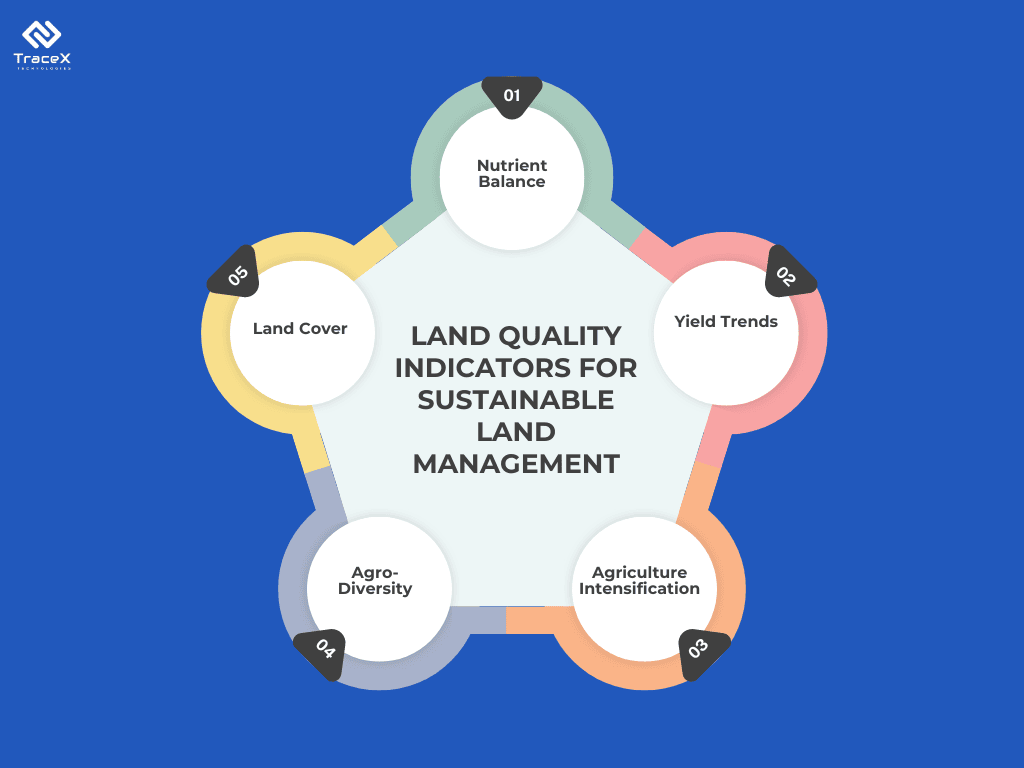Contact: +91 99725 24322 |
Menu
Menu
Quick summary: Discover the importance of sustainable agriculture land management in promoting environmental conservation and long-term productivity. Explore strategies, best practices, and innovative approaches to enhance soil health, preserve biodiversity, and mitigate climate change.

Imagine a future where soil fertility is lost, water resources are scarce, and crops fail to thrive. This scenario is closer than we think if we don’t act now. The challenge is real: how can we produce enough food while preserving the very land that sustains us? The answer lies in embracing sustainable practices that protect our ecosystems and ensure long-term agricultural productivity. Sustainable agriculture land management is the key to feeding a growing population without depleting our planet’s resources.
According to Science Direct, the UNDP estimated that $42 billion in income and 6 million ha of productive land are lost every year due to land degradation
Sustainable agriculture land management is of great importance as it promotes environmental preservation, economic benefits, food security, biodiversity conservation, and climate change mitigation. By adopting sustainable farming practices, we can ensure that we can continue to produce food while preserving natural resources and promoting the long-term sustainability of the agricultural sector. Therefore, it is essential that governments, farmers, and other stakeholders work together to promote sustainable agriculture land management practices and ensure a reliable food supply for future generations.
Sustainable agriculture land management is of great importance for several reasons:
Environmental preservation: Sustainable agriculture land management practices promote environmental preservation by reducing soil erosion, preserving water resources, maintaining soil health, and reducing greenhouse gas emissions This approach ensures that we can continue to produce food without degrading natural resources and harming the environment.
One of the most critical sustainable agriculture land management practices is crop rotation. Crop rotation involves alternating crops in a specific field each year to improve soil health, reduce pests and diseases, and increase yields. By rotating crops, farmers reduce the buildup of soil-borne pests and diseases and improve soil fertility. Additionally, different crops have different nutrient needs, so crop rotation can help balance soil nutrients and reduce the need for synthetic fertilizers.
Another important sustainable agriculture land management practice is cover cropping. Cover crops such as legumes, grasses, or clovers are planted to improve soil health, reduce erosion, and increase soil fertility. Cover crops help reduce soil compaction, which improves water infiltration and allows plant roots to penetrate deeper into the soil. Additionally, cover crops can fix nitrogen from the atmosphere, reducing the need for synthetic fertilizers.
Conservation tillage is another sustainable agriculture land management practice that involves reducing or eliminating tillage to preserve soil structure, improve water infiltration, and reduce erosion. Tilling breaks up the soil structure, making it more susceptible to erosion and compaction. By reducing or eliminating tillage, farmers can maintain soil health and reduce the need for synthetic fertilizers.
Integrated pest management is also critical farmland land management practice. Integrated pest management involves using a combination of biological, physical, and chemical methods to manage pests while minimizing the impact on the environment. This approach includes techniques such as crop rotation, companion planting, and the use of natural predators and parasites to control pests.
Agroforestry is one of the climate smart land management practice that involves introducing trees or shrubs into agricultural landscapes to improve soil health, reduce erosion, and provide additional income streams. Trees and shrubs can provide shade and reduce soil moisture loss, improving soil health and reducing the need for irrigation. Additionally, trees and shrubs can provide fruits, nuts, and other products, creating additional income streams for farmers.
Water management is also critical for land management. Practices such as drip irrigation, rainwater harvesting, and water-efficient crop selection can help conserve water resources. By reducing water use, farmers can reduce the pressure on water resources and improve the overall sustainability of agriculture.
Finally, regular soil testing is essential for sustainable agriculture land management. Soil testing can help farmers determine nutrient content and make informed decisions about fertilization. By using soil testing, farmers can reduce the amount of synthetic fertilizers they use, saving money and reducing the negative environmental impacts of fertilizer use.
Climate resilience in agriculture and climate-smart agriculture are integral to sustainable land management practices, offering solutions to navigate the complexities of a changing climate. Climate resilience focuses on equipping agricultural systems to withstand and recover from climate-related shocks, such as extreme weather events or shifting growing conditions. By integrating practices like soil conservation, diversified cropping systems, and efficient water use, farmers can build resilient landscapes that maintain productivity despite climatic uncertainties.
On the other hand, climate-smart agriculture goes a step further by not only adapting to climate impacts but also actively mitigating greenhouse gas emissions. This approach involves implementing practices that enhance carbon sequestration, optimize resource use, and increase productivity in a way that reduces environmental footprints. Techniques such as precision farming, agroforestry, and improved land use planning exemplify climate-smart strategies that contribute to sustainable land management. Together, these approaches foster a harmonious balance between agricultural productivity and environmental stewardship, ensuring that our land remains a vital resource for future generations.

Sustainable agriculture land management is becoming increasingly important as we work to address climate change, protect natural resources, and feed a growing global population. However, implementing sustainable agriculture practices comes with several challenges that must be addressed in order to ensure their success.
Despite these challenges, many farmers and organizations are making progress towards sustainable agriculture land management, recognizing the long-term benefits it can provide for both the environment and their businesses. Addressing these challenges will require collaboration and investment from governments, NGOs, and the private sector to provide farmers with the resources and support they need to implement sustainable agriculture practices effectively. This can include investments in infrastructure, training and education programs, and the development of new technologies and practices that can help the smallholder farmers adapt to changing environmental conditions.
The TraceX Sustainability Platform is designed to simplify the process of measuring the impact of sustainable land management practices, making it accessible and efficient for all stakeholders. Through its advanced data collection and analysis tools, the platform allows users to track key metrics such as soil health, carbon sequestration, and water usage in real time. By integrating technologies like blockchain and satellite monitoring, TraceX ensures the accuracy and transparency of the data, enabling users to assess the effectiveness of their sustainable practices with confidence. This streamlined process not only saves time but also provides actionable insights that help farmers, agribusinesses, and policymakers make informed decisions to improve sustainability outcomes. Whether it’s monitoring the success of crop rotation, cover cropping, or agroforestry, TraceX empowers users to quantify their impact and demonstrate tangible benefits, driving continuous improvement in land management strategies.
Explore our Sustainability Platform
Sustainable agriculture land management ensures long-term food security and ecological balance. By adopting practices that protect and enhance our land, we not only preserve vital resources but also build resilience against climate change. As we continue to innovate and integrate advanced tools like the TraceX Sustainability Platform, we empower ourselves to make data-driven decisions that foster both productivity and sustainability. Embracing these practices today is crucial for cultivating a future where agriculture thrives in harmony with the environment, securing a healthy and prosperous world for generations to come.
